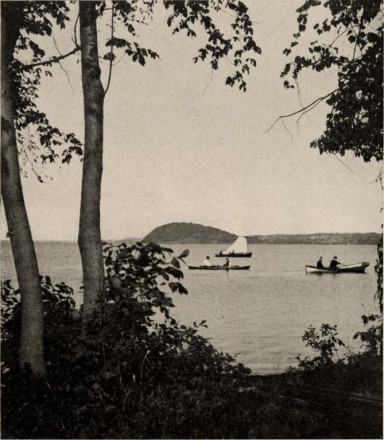Last week I just had to share with you my experiences with the Ambassador Girl Scouts, but this week, I am back on my summer track with another “new” old blog. This one I wrote in 2010, when I discovered how and when and where Juliette Gordon learned to canoe. I think it is especially appropriate at this time of the year, when several Girl Scouts I know are off to camp, some of them being taught to canoe by friends, just like Juliette!
_________________
Biographers are always on the look out for origins of actions and behavior. Since Juliette “Daisy” Gordon Low founded the Girl Scouts, and since one of the great things about Girl Scouting is the ability for girls to get outside in nature and flex their muscles, it was of great interest to me to read this from a letter that Daisy wrote when she was 24 years old:
“…May Fuller taught me to paddle in a canoe.”
Daisy was with several of her friends in Saratoga, New York, where they went to the racetrack (Daisy bet on the horses and won), they went on picnics, and as she put it, they “got up all sorts of expeditions together.” Lake Saratoga is beautiful place to learn how to canoe. It is nearly eight miles long and two miles wide, and has shallow shorelines. May Fuller must have been an excellent teacher, for Daisy enjoyed canoeing so much she wrote: “I certainly intend to perfect my smattering of that accomplishment here.”
Canoeing was phenomenally popular in the second half of the nineteenth century. Clubs were formed to promote the sport. It was one of the few outdoor activities that women could do without causing eyebrows to raise. Of course, women were not competitive canoeists. That was left to men.
Men like Warington Baden-Powell.
When Englishman Warington Baden-Powell was 24 years old, he took off on a lengthy canoe trip in the frigid waters around Denmark and Sweden. In 1871 he published a book about that jaunt, called Canoe Travelling: Log of a Cruise on the Baltic and Practical Hints on Building and Fitting Canoes. Three years later, he joined the Royal Canoe Club and in 1886 (two years after Daisy learned to canoe), Warington Baden-Powell traveled to New York to represent England in the International Challenge Cup. He took part in the four-mile canoe race near Staten Island. The Americans, trying to be friendly, wanted to change the racecourse to provide smoother waters for their competitors. But according to the New York Times, Baden-Powell said that “if he beat the New-York men at all he wanted to do it on their own ground.” Baden-Powell finished second in that particular race, but in 1910, his younger brother, Robert Baden-Powell, founder of the Boy Scouts, took advantage of Warington’s passion and expertise, and asked him to create a specialized branch of the Boy Scouts, called the Sea Scouts, which are still going strong today.
Among the earliest Girl Scout badges was the Sailor. For this badge, in addition to basic water and boating safety, a Girl Scout had to possess practical knowledge. She could demonstrate this on a motorboat, a sailboat, or a canoe. To earn the badge, she would have to know how to store a canoe out of water, how to get in and out of a canoe safely, how to overturn a canoe and right it again, what “portage” meant, and the names of two “standard makes of canoes.” Perhaps in creating this badge, Daisy remembered her first happy days learning how to canoe with an assortment of girlfriends in the sparkling waters of Lake Saratoga.
Biographers, being human, can’t help but delight in connections between their research and their own lives. In my case, my friends taught me how to canoe at Girl Scout camp. And my uncle-in-law, Bill Cordery, was a proud, active, and dedicated Sea Scout all his life—as a boy and as a Scout leader–until the day he died, just a few months ago.


